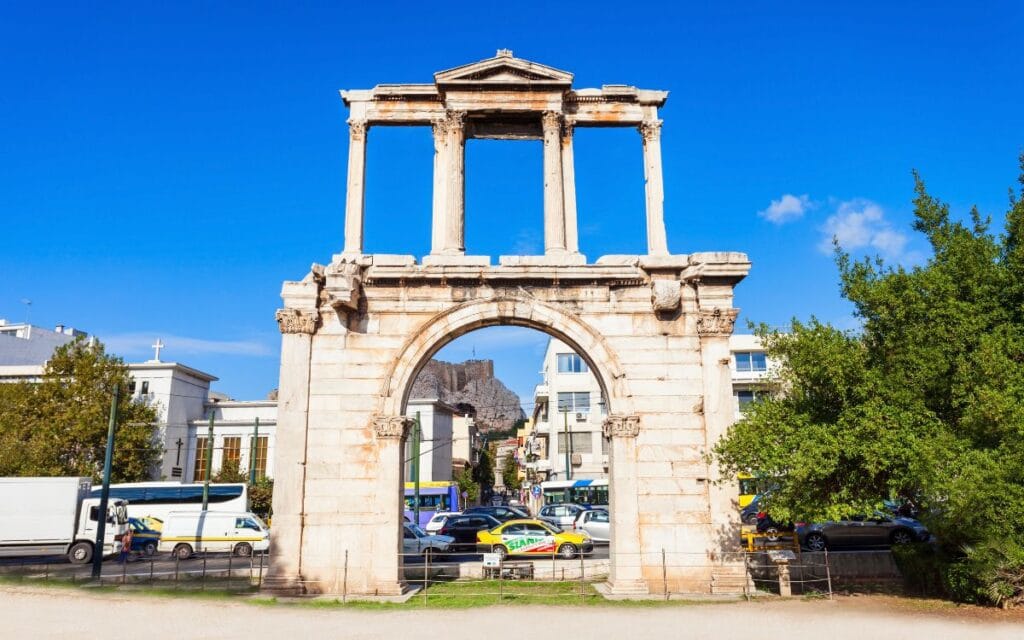Arch of Hadrian
Arch of Hadrian

The Arch of Hadrian is located near the Temple of Olympian Zeus, one of the largest and most impressive ancient monuments in Athens. Its strategic placement at the entrance to the eastern part of the city highlights its symbolic role in the shift from Greek to Roman influence. The structure itself stands about 18 meters (59 feet) tall and 8 meters (26 feet) wide, made of marble, and is adorned with intricate inscriptions and reliefs that tell the story of Hadrian’s impact on Athens.
The arch has a distinctive, elegant design. It consists of a large, rectangular gateway with a central arch that allowed passage through the structure. The arch is flanked by two columns, and each side is decorated with inscriptions that reflect the relationship between Athens and the Roman Empire. On the eastern side of the arch, the inscription reads, “This is Athens, the ancient city of Theseus,” referencing the city’s legendary founder and its ancient Greek heritage. On the western side, the inscription reads, “This is the city of Hadrian and not of Theseus,” highlighting the emperor’s role in transforming the city during his reign.
Hadrian’s contribution to Athens was substantial. During his rule, Hadrian invested heavily in the city, funding public works and building projects that helped to transform Athens into a more Romanized city, while also preserving its rich Greek traditions. The Arch of Hadrian symbolizes this merging of the two cultures and marks a boundary between the old and new Athens. It is often seen as a symbol of the transition from the Classical Greek period to the Roman period in the history of Athens.
The arch was constructed in 131 AD, shortly after Hadrian visited Athens. The emperor had a deep admiration for Greek culture, and his reign was marked by a genuine affection for Athens and its heritage. One of his major contributions was the expansion and renovation of the Temple of Olympian Zeus, which is located close to the arch. Hadrian also initiated the construction of other important buildings, including the Hadrian Library, which housed a vast collection of scrolls and manuscripts, further solidifying his legacy in Athens.
The Arch of Hadrian was not only a monumental gateway but also a symbol of the emperor’s enduring legacy in the city. It was a statement that Hadrian, like Theseus before him, was a key figure in the city’s history, though from a different cultural and political background. The arch served as a physical marker of the changing times in Athens, bridging the gap between the classical Greek era and the Roman period.
Today, the Arch of Hadrian remains an important historical and architectural landmark in Athens. Although it is in a state of partial ruin, much of its grandeur is still evident, and it continues to attract visitors from around the world. The site is also located near other significant ancient monuments, including the Temple of Olympian Zeus and the Acropolis, making it an integral part of any historical tour of Athens.
The Arch of Hadrian stands not only as an architectural marvel but also as a symbol of the long-lasting influence of the Roman Empire on Greek culture. It represents the fusion of two great civilizations and continues to remind us of the city’s rich, complex history. For visitors to Athens, the Arch of Hadrian offers a unique glimpse into the past, bridging the ancient Greek and Roman worlds with its timeless beauty and historical significance.

